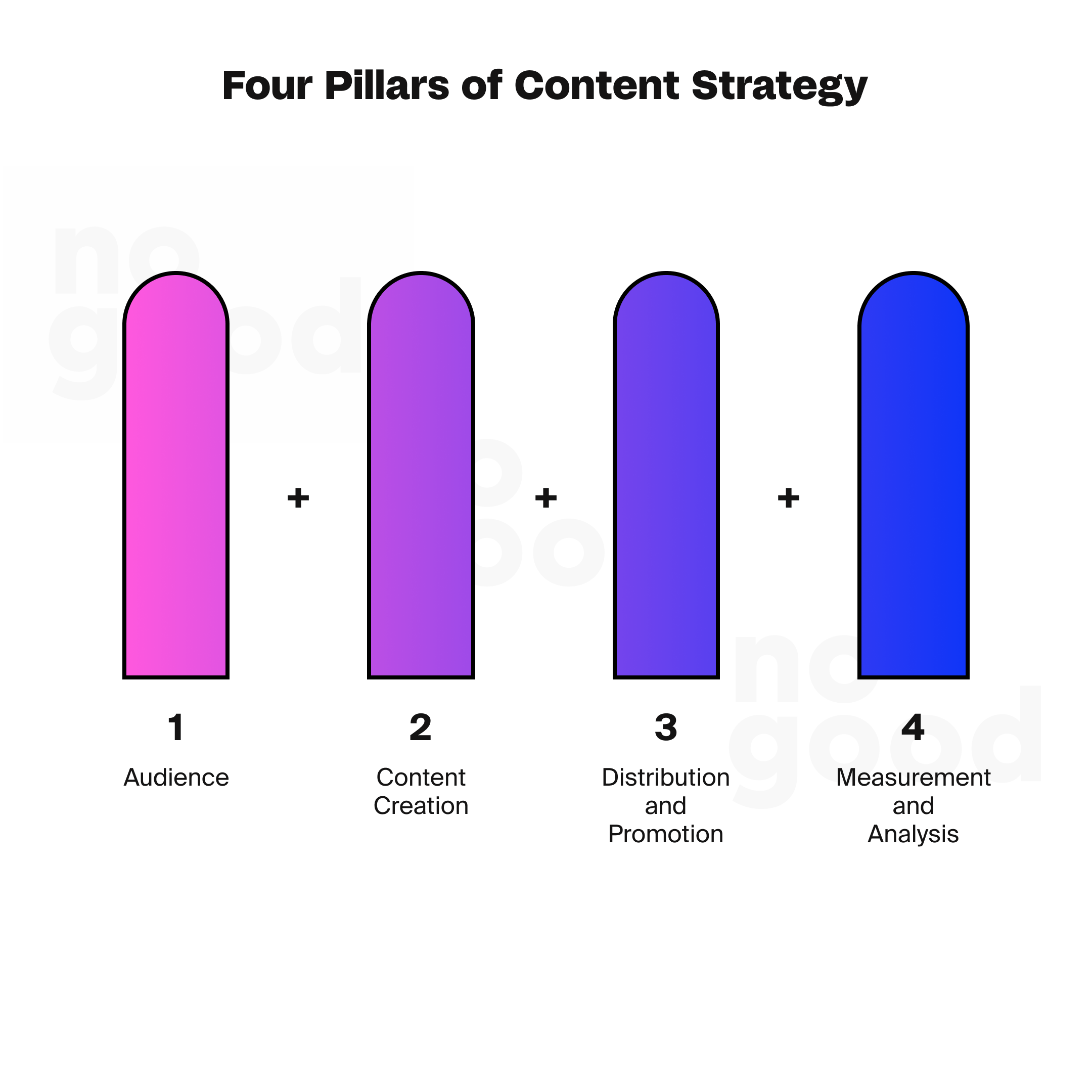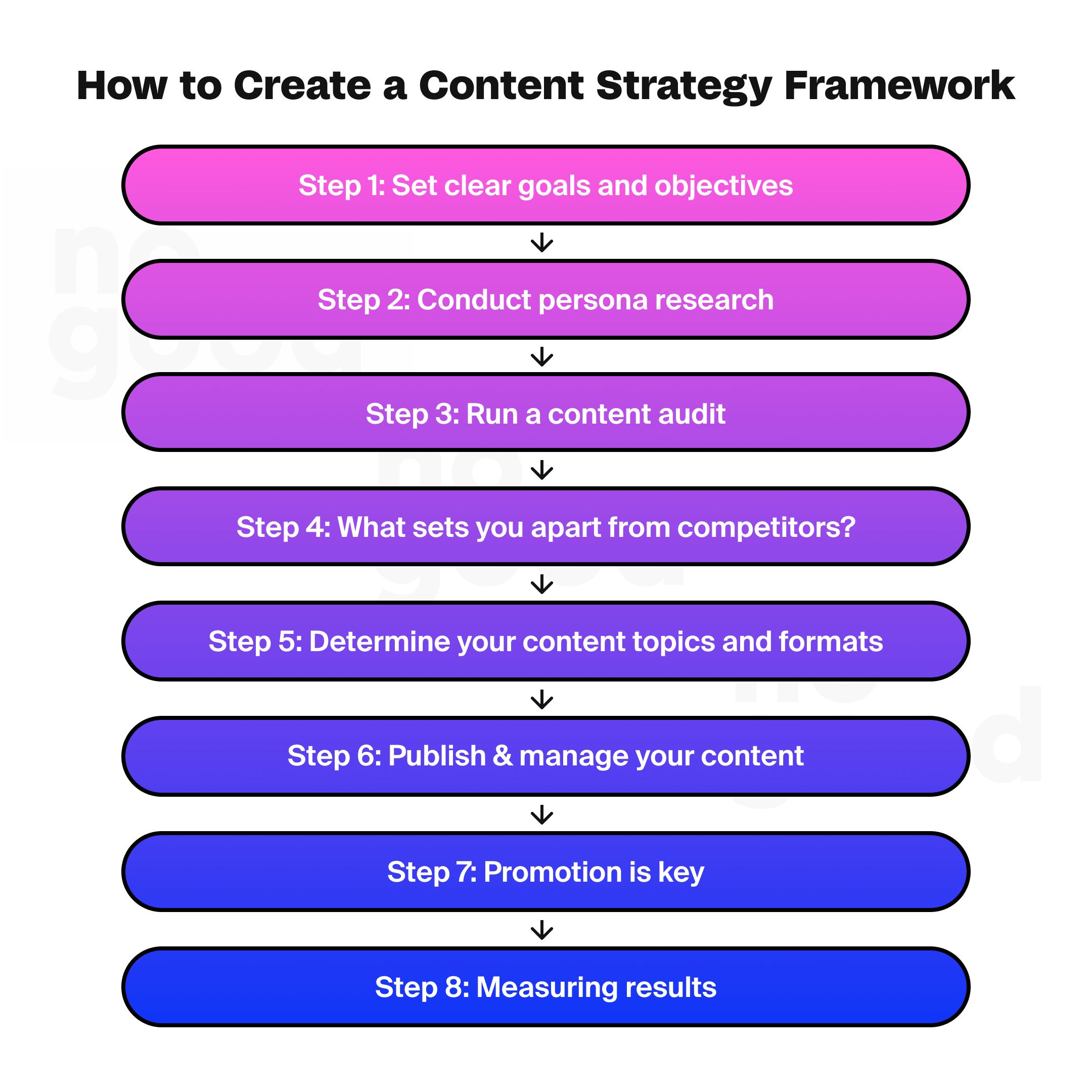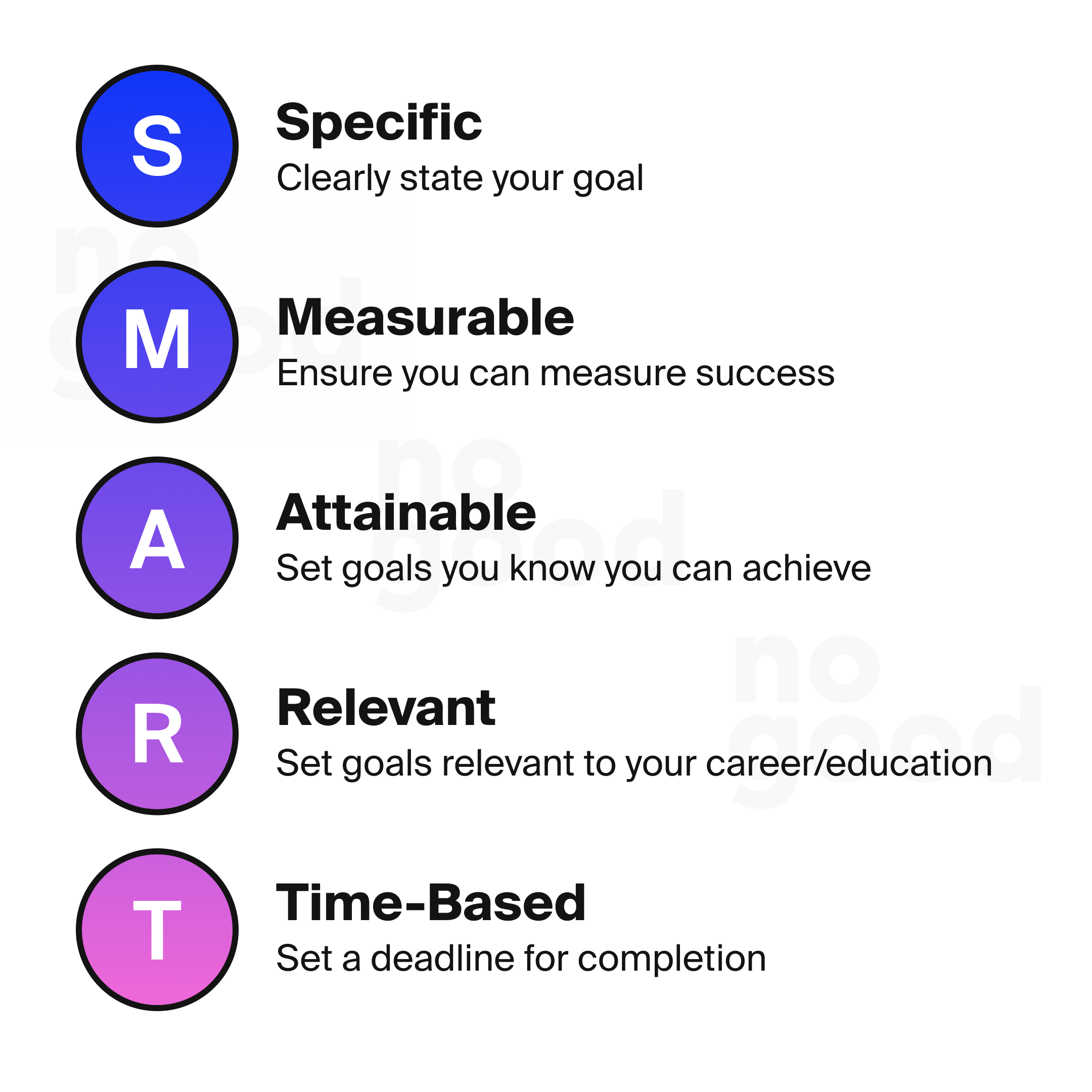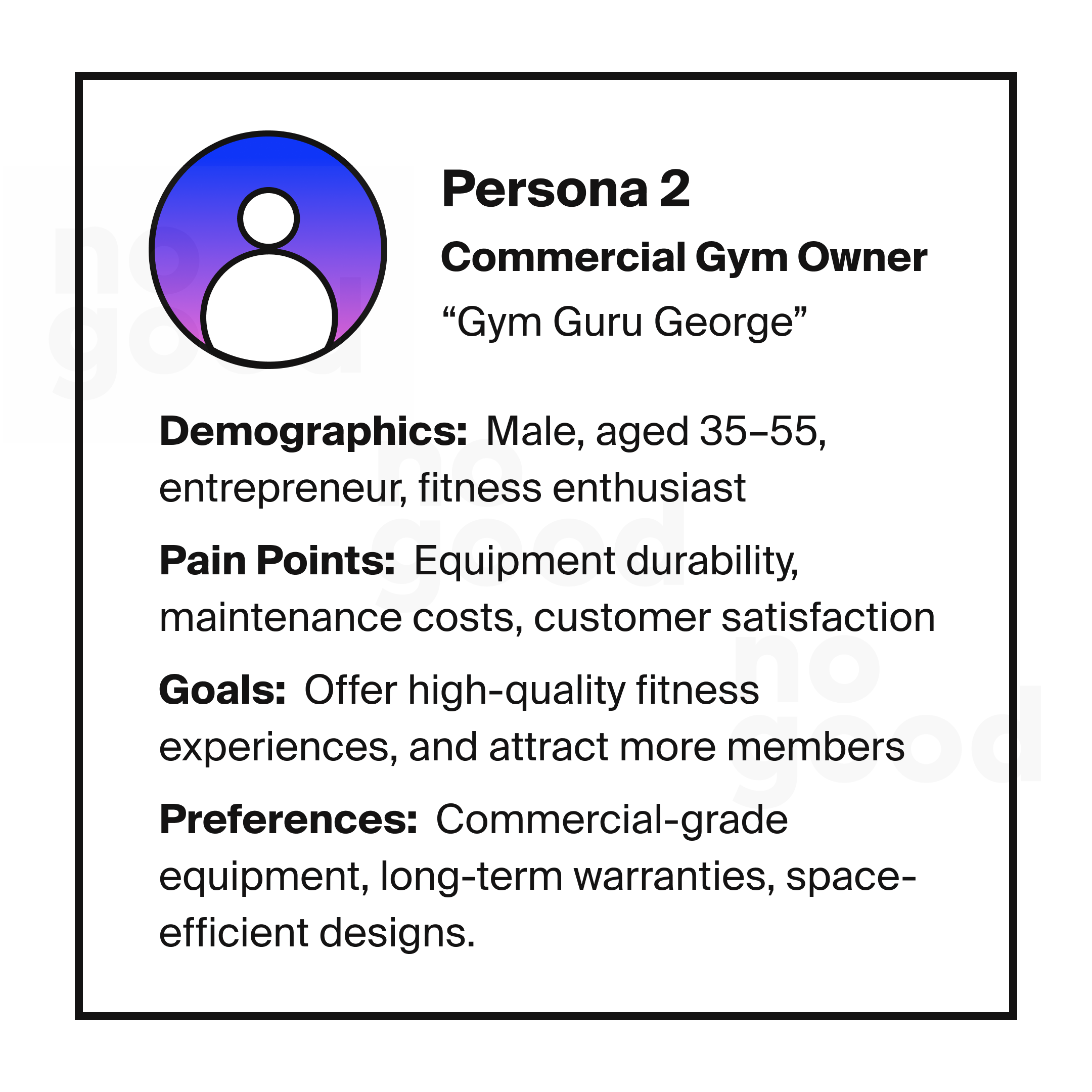Whether you’re a newcomer to content marketing or have been following the same strategy for some time, it’s always beneficial to reassess your content strategy. Ensuring it remains current, innovative, and appealing to your potential customers is crucial, regardless of when or how they plan to make a purchase.
In a rapidly evolving digital landscape, where information flows freely, and consumer preferences constantly shift, a well-crafted content strategy is your secret weapon. It’s the compass that guides your business through the complex terrain of online marketing, helping you connect with your audience, build brand authority, and, ultimately, drive growth.
If you’re having trouble planning for the upcoming year or need some fresh ideas to include in your plan, you’ve come to the right place. In this article, we’ll delve into the fundamentals of content strategy, explore the significance of having a content marketing plan for your business, and outline the essential steps required to craft your strategy effectively.
Whether you’re a seasoned content strategist looking for new insights or a newcomer to the world of content marketing, this guide will provide you with valuable insights and actionable steps to elevate your content game. Let’s embark on this journey together and unlock the power of content for your business’s success.
What is a content strategy framework?
A content strategy framework is an exhaustive plan that guides orchestrating your content marketing initiatives. It encompasses a detailed plan for how you will create, manage, publish, promote, and maintain content to achieve your brand’s objectives. This strategic roadmap is not just a theoretical document; it’s the practical guide to success in the realm of content marketing for your business.
This framework is meticulously crafted, based on research and careful consideration, and provides precise instructions on various aspects of content creation and dissemination. It elucidates what type of content you should produce, defines your target audience, specifies the channels for content distribution, outlines the timing of content publication, elaborates on the promotional strategies to employ, assigns responsibilities for each task, and recommends the tools to utilize.
What is the purpose of a content strategy?
One compelling fact underscores the importance of having a documented content strategy: brands and marketers who record their strategies consistently report greater success than those who operate without a clear plan. Studies show that planners are three times more likely to achieve content marketing goals.
To illustrate, consider a scenario where your business aims to enhance brand awareness. You might formulate a content strategy that centers around Search Engine Optimization (SEO) to attain this objective. This strategy heightens your website’s visibility on search engine results pages (SERPs), driving increased traffic to your products or services. This aligns with your brand’s goals and exemplifies how a content strategy is a vital tool for achieving them.
Even for new businesses, the notion that a content strategy is a luxury can be misguided. Creating top-notch content in the initial stages can be immensely valuable for establishing trust with fresh audiences and securing lasting prosperity.
A robust content strategy forms the bedrock of the “Attract” and “Delight” stages in a buyer’s journey within the inbound marketing framework. In addition to attracting potential customers to your brand, a thoughtfully crafted content strategy can be a powerful resource for boosting sales effectiveness and enhancing customer satisfaction. Moreover, with most marketers actively investing in content marketing, developing a sound content strategy is imperative for staying competitive in your industry.
What are the four pillars of a content marketing strategy framework?
The four pillars of a content marketing strategy framework typically include:
- Audience: Understanding your target audience is fundamental. You need to know who they are, their needs, preferences, pain points, and behaviors. Creating buyer personas or user profiles can help in this regard.
- Content creation: This pillar involves planning and producing relevant, valuable, high-quality content. It encompasses creating various content types, such as blog posts, videos, infographics, podcasts, and more, tailored to your audience’s interests and needs.
- Distribution and promotion: Once you have created content, you need a strategy for getting it in front of your audience. This includes selecting appropriate channels (e.g., social media, email marketing, SEO), scheduling posts, and considering paid promotion if necessary.
- Measurement and analysis: This pillar focuses on tracking the performance of your content marketing efforts. You need to define key performance indicators (KPIs) and regularly analyze data to evaluate the effectiveness of your content strategy. Adjustments and improvements should be made based on these insights.

These four pillars collectively form the foundation of a content marketing strategy framework. They ensure your content is tailored to the right audience, created effectively, distributed strategically, and continuously improved to meet your business goals.
Steps to develop a winning content strategy framework
Step 1: Set clear goals and objectives
Step 2: Conduct persona research
Step 4: What sets you apart from competitors?
Step 5: Determine your content topics and formats
Step 6: Publish & manage your content

Step 1: Set clear goals and objectives
Before embarking on any content marketing plan, defining your goals and objectives is imperative. This initial step lays the groundwork for a purposeful and effective content strategy framework. Start by asking yourself: What do you aim to achieve, and why do you want to produce content? These fundamental questions are the core of a successful content strategy.
Begin by examining your high-level business goals, insights from meetings, and feedback from your team. However, it’s also crucial to supplement this information with independent research to ensure your goals are robust and have long-term viability.
Actionable tips to set goals and objectives
- The foundation of your content strategy framework should start by uncovering the “why” that underpins your efforts. Why are you embarking on content creation, and what are your expected outcomes? What objectives are you aiming to achieve?
- To organize your goals effectively, prioritize them based on importance. Rank them from the most critical to the least, as this will help you determine which aspects of your strategy require immediate attention and which can be addressed in the long term. Additionally, this prioritization can assist in resource allocation as you progress through the content strategy development process.
- Furthermore, consider employing the SMART framework to refine your goals. SMART stands for Specific, Measurable, Achievable, Relevant, and Time-bound. This framework aids in making your goals more precise and actionable, ensuring that they are well-defined and aligned with your overall content strategy.

An example of setting goals and objectives
By setting clear and specific goals, you establish a strong foundation for your content strategy framework. For instance, if your objective is to increase website traffic, your goal might take the form of: “I’d like to enhance our website traffic by 20%. We’ve observed a correlation between higher website traffic and increased sign-ups for our programs. To achieve this, we plan to boost website traffic by creating more comprehensive guides and 3,000-word articles for our blog.”
Step 2: Conduct persona research
The second crucial step in building a winning content strategy framework is to conduct thorough persona research. This step involves defining your content’s target audience, often referred to as your buyer persona, and gaining a deep understanding of their needs, preferences, and challenges.
Actionable tips to conduct persona research
- Define your target audience: Clearly establish who your content is intended for and who stands to benefit from the expertise and solutions your brand offers. This involves identifying the individuals you should be addressing through your content.
- Conduct audience research: Conducting comprehensive audience research is essential to creating content that resonates with your target audience. Gain insights into what matters to them and the specific challenges they face. Your content’s effectiveness hinges on how well it addresses these concerns.
- Interview your audience: One of the most effective ways to get to know your audience intimately is to engage in direct interviews. Begin with a set of assumptions about who might benefit from your offerings, and then validate these assumptions by conversing with your prospects and customers. Questions like, “If you had a magic wand that could instantly solve one of your current problems regarding X, which one would you choose?” can provide invaluable insights.
- Collect and analyze data: If you still need to get well-defined buyer personas, analyze data to identify the groups of people you want to create content for and the types of content that resonate with them. Pay attention to metrics such as contact trends and demographics to categorize leads based on common characteristics.
- Refine your buyer personas: Whether you are a seasoned marketer or new to the field, it’s crucial to revisit and refine your buyer personas regularly. Market conditions and audience preferences can change over time. Determine if you need to target a new group of people or expand your current audience base. Take a closer look at your current customer segments to make persona refinements.
- Create detailed personas: Develop detailed buyer personas for each audience segment. These personas should serve as fact sheets, encompassing traits, preferences, and challenges shared by most members of a particular audience group. Gather information such as job titles, income levels, education, habits, and content consumption preferences. Identify the channels they use to access content.
Understanding your target audience at a fundamental level is the cornerstone of crafting content that resonates and delivers value. It’s essential to base your audience definition on factual data, not assumptions or unrealistic expectations. You can create accurate and actionable buyer personas by conducting comprehensive research, interacting with your audience, utilizing surveys, and employing social listening.
These personas, tailored to each audience segment, will guide your content strategy and ensure that your content speaks directly to the needs and interests of your intended readers.
An example of conducting persona research
In this scenario, the company wants to refine its content strategy to target different customer segments effectively.
Step 1: Define the target audiences
The fitness equipment company identifies two primary target audiences:
- Home gym enthusiasts
- Individuals who prefer working out at home.
- May have limited space and budget for fitness equipment.
- Interested in versatile, compact, and cost-effective fitness solutions.
- Commercial gym owners
- Owners or managers of gyms and fitness centers.
- Seek high-quality, durable fitness equipment for their facilities.
- Prioritize equipment reliability, durability, and ease of maintenance.
Step 2: Conduct audience research
To understand these audiences better, the company conducts research through various methods:
- Surveys: The company sends out surveys to current customers and potential leads in each segment to gather insights. Questions cover exercise habits, preferred equipment types, and fitness goals.
- Social listening: By monitoring social media platforms, the company observes conversations, comments, and trends related to home workouts and commercial gym equipment. This provides real-time feedback.
- Customer interviews: The company conducts interviews with a selection of current customers and gym owners. These interviews delve deeper into their preferences, pain points, and decision-making criteria when purchasing fitness equipment.
- Data analysis: The company also analyzes its existing customer data, including purchase history and customer feedback, to identify trends and patterns within each segment.
Step 3: Persona development
Based on the research findings, the company develops detailed buyer personas for each target audience:
Persona 1: Home gym enthusiast – “Fitness-focused Fiona”
- Demographics: Female, aged 28-45, working professional.
- Pain points: Limited space at home, budget constraints, seeks convenience.
- Goals: Stay fit, lose weight, and maintain a healthy lifestyle.
- Preferences: Compact and versatile equipment, online workout programs, and budget-friendly options.
Persona 2: Commercial gym owner – “Gym guru George”

- Demographics: Male, aged 35-55, entrepreneur, fitness enthusiast.
- Pain points: Equipment durability, maintenance costs, customer satisfaction.
- Goals: Offer high-quality fitness experiences, and attract more members.
- Preferences: Commercial-grade equipment, long-term warranties, space-efficient designs.
These personas represent archetypal individuals within each target audience, helping the company tailor its content strategy to address the specific needs, challenges, and preferences of home gym enthusiasts and commercial gym owners. This research-driven approach ensures that the content resonates with the intended audience, leading to more effective marketing and better customer engagement.
Step 3: Run a content audit
Conducting a comprehensive content audit is the third crucial step in developing a winning content strategy framework. This audit helps you assess the performance of your existing content and informs future content creation.
Actionable tips for running a content audit
- Review your content efforts: Analyze your past content marketing efforts, including blog posts, social media content, videos, and any other formats you’ve used. If your brand is new to content marketing, focus on your early blog posts and social media updates.
- Evaluate performance: Determine which content pieces have performed exceptionally well and which underperformed. Look at page views, engagement, shares, and conversion rates.
- Identify gaps: Pay attention to topic and formatting gaps in your content portfolio. Are there areas where you haven’t produced content but should? Note down any missing content formats or topics that could be valuable to your audience.
- Assess quality and relevance: Evaluate the quality and relevance of your existing content. Does it align with your audience’s needs and interests? Does it reflect what’s most important to your audience? Use this assessment to guide your content direction.
- Repurposing opportunities: Explore opportunities to repurpose your top-performing content into different formats. For instance, consider turning popular blog posts into YouTube videos, eBooks, or podcasts to expand your content’s reach.
- Examine content workflow: Take a close look at your content creation workflow. Determine whether you have a strategic workflow in place or if your processes are driven by team habits. Identify any bottlenecks or inefficiencies that may affect your content quality and delivery.
- Set new goals: Utilize the insights from your content audit to set new goals for the upcoming year. Align your team’s goals with your organization’s broader objectives. This is an excellent time to refine your content strategy and brainstorm fresh content ideas.
Step 4: What sets you apart from competitors?
To create a compelling content strategy, you must effectively differentiate yourself from your competitors. Your target audience needs reasons to pay attention to your content, choose your products or services, and become loyal advocates.
Actionable tips for setting yourself apart from competitors
- Identify strengths: Identify your brand’s strengths and unique selling points. What do you offer that distinguishes you from the competition? Consider product features, customer support, warranties, or additional services.
- Highlight value: Emphasize how your offerings solve pain points better than anyone else. For example, highlight these benefits if your product comes with a five-year warranty, video tutorials, and 24/7 customer support.
- Showcase uniqueness: Showcase what makes you special in your industry. Whether it’s exclusive features, unique guarantees, or exceptional customer experiences, ensure your audience is aware of what sets you apart.
By articulating your strengths and unique value propositions clearly, you can create content that resonates with your target audience and positions your brand as the preferred choice over competitors. This step is vital in building a content strategy that effectively captures your audience’s attention and fosters brand loyalty.
Step 5: Determine your content topics and formats
Deciding on the content topics and formats is critical in crafting a winning content strategy framework. This step involves aligning your content focus with your brand’s expertise and your audience’s preferences.
Actionable tips for selecting content topics and formats
- Select content topics: Begin by choosing one or two overarching content topic areas that will serve as the core focus of your content strategy. These topics should represent the intersection of what your brand excels in (your expertise) and what your audience is eager to consume. This alignment creates your content’s sweet spot.
- Consider content formats: Determine how you’ll present your content. Your choice of formats should consider both your available resources and your audience’s content consumption preferences. Some content format options to consider include videos, blog articles, social media content (e.g., polls, carousels, videos), email newsletters, podcasts, and more. Assess your team’s capabilities, time constraints, skills, and content budget to make informed decisions.
- Review personas and goals: Tailor your content topics and formats to suit your target personas’ unique needs and preferences. Carefully evaluate your content goals and the desired actions you want each persona to take. Ensure that your chosen content types align with these goals. For example, if your aim is to drive conversions, blogs might be the preferred format, while podcasts could be ideal for building brand awareness. Let your goals and audience guide your content choices.
- Assess available resources: Conduct a thorough assessment of the resources at your disposal for content production.
Pose essential queries to refine your direction and establish a viable content strategy:
- Evaluate the size of your content team.
- Determine the amount of time your team can dedicate to content creation.
- Identify the skills and expertise of your current team.
- Identify which content types might require additional training or outsourcing.
- Set a clear content budget to allocate resources effectively.
- Choose topics, formats, and channels: Using insights from your buyer personas and content topics, narrow down your chosen content formats and channels. For example, if you’re launching a video channel but lack experience, consider creating shorter video clips. However, be mindful of the competitive landscape in your chosen topic area. If long-form videos or podcasts dominate the rankings, decide whether to stand out with a unique format or seek assistance to produce content that aligns with the prevailing trends.
By making thoughtful decisions about your content topics and formats, you’ll create a content strategy that resonates with your target audience, maximizes your available resources, and achieves your content marketing goals. These decisions lay the foundation for effective content creation and distribution.
Step 6: Publish & manage your content
Once you’ve determined what content you’ll create and in what formats, the next step is to develop a plan for publishing and managing your content effectively. This phase goes beyond content creation and focuses on the organization and optimization of your content strategy.
Actionable tips to publish and manage your content
- Develop a content Calendar: A well-structured editorial calendar is essential for maintaining consistency in your content publishing efforts. It enables you to plan and schedule a diverse range of content on your website. Consider creating a separate social media content calendar to promote and manage your content across various platforms effectively.
- Optimize for reach: While many of your content ideas may be evergreen, don’t disregard timely topics that can generate spikes in traffic. While these topics may not make up the majority of your editorial calendar, they can be valuable for attracting attention. Apart from popular holidays, explore niche holidays or events that may resonate with your audience and consider creating relevant content for your blog or social media.
- Track and analyze content performance: Analytics play a crucial role in measuring the success of your content strategy. Choose key performance indicators (KPIs) tailored to each channel to gauge the impact of your content. Here are some resources to help you select the most appropriate KPIs for different channels, such as email marketing, blog content, SEO, marketing, social media, and overall marketing performance:
- Email Marketing KPIs
- Blog KPIs
- SEO KPIs
- Marketing KPIs
- Social Media KPIs
- Marketing KPIs
Effectively tracking and analyzing these KPIs will provide insights into your content’s performance, engagement, lead generation, and conversion rates. Use these insights to make informed decisions, refine your content strategy, and adapt to the evolving needs of your audience.
By implementing a well-structured content publishing and management plan, you’ll ensure that your content remains organized, relevant, and optimized for reaching your target audience. This step is crucial for maintaining consistency and maximizing the impact of your content marketing efforts.
Step 7: Promotion is key
Determine your content promotion strategy by addressing the following questions:
- What Promotion Channels Are Most Relevant to Your Audience? Select the primary promotion channel that aligns with your target audience’s preferences.
- How Will You Execute Your Promotion Plan? Create a straightforward plan for sharing your content. For example, when you publish a new blog post, you can easily share it on Facebook or notify your email subscribers.
Remember that effective content promotion ensures your content reaches its intended audience.
Step 8: Measuring results
To effectively monitor and evaluate your content marketing efforts, you should follow these steps:
- Define Clear Goals: Begin by clearly articulating your content marketing objectives. What do you intend to achieve? Whether it’s increased website traffic, higher engagement, or enhanced conversion rates, your goals should be specific and measurable.
- Establish Key Performance Indicators (KPIs): For each goal, identify the KPIs that will help you measure success. For instance, if your goal is to boost website traffic, a relevant KPI might be unique website visitors. Assign specific KPIs to each objective.
- Select the Right Tracking Tools: Determine the tools and resources you’ll require to track your chosen KPIs effectively. For tracking website traffic, Google Analytics is a valuable tool. Ensure you have access to the appropriate analytics platforms.
- Set Reporting Frequency: Decide how often you will review and analyze the data. Regular monitoring is essential to identify trends and make timely adjustments. Establish a reporting schedule that aligns with your goals and resources.
By following these steps, you’ll be well-prepared to track and measure your content marketing results, enabling you to make informed decisions and refine your strategy as needed.
Developing a winning content strategy framework is not just a task for the moment; it’s an ongoing journey to success in the dynamic world of digital marketing. Whether you’re new to content marketing or a seasoned strategist, periodically reassessing and refining your digital content strategy is essential. A well-crafted content strategy guides you through the ever-evolving digital landscape, helping you connect with your audience, build brand authority, and drive growth.
In this article, we’ve explored the fundamentals of content strategy, emphasizing its significance for businesses of all sizes. We’ve delved into the essential steps required to craft an effective content strategy, from setting clear goals and conducting persona research to running content audits, differentiating yourself from competitors, and determining content topics and formats. We’ve also highlighted the importance of effectively publishing, managing and promoting your content while continuously measuring your results.
Regardless of where you are on your content marketing journey, this guide equips you with valuable insights and actionable steps to elevate your content strategy game. As you embark on this journey, remember that your content strategy is not just a plan; it’s your key to unlocking the power of content for your business’s long-term success in the digital age.





